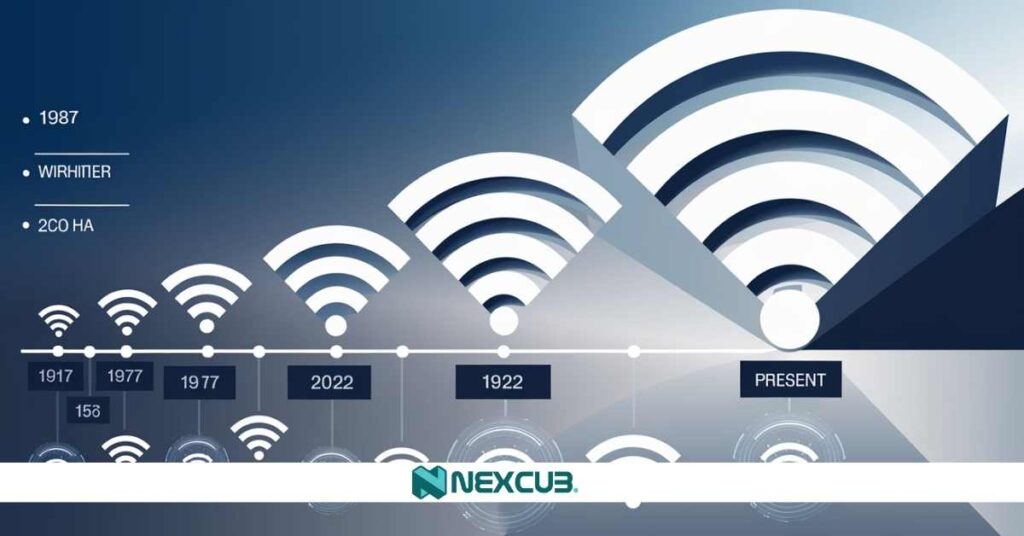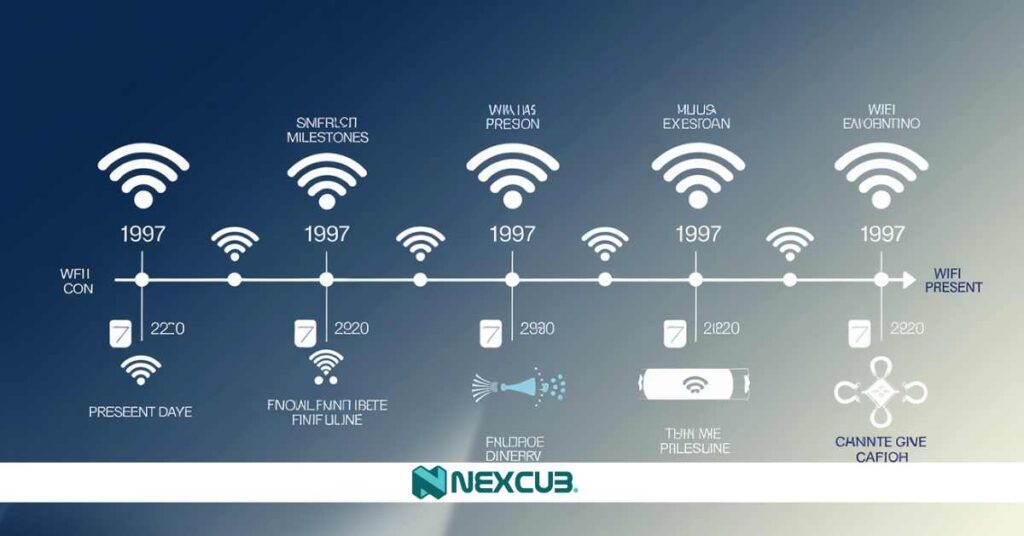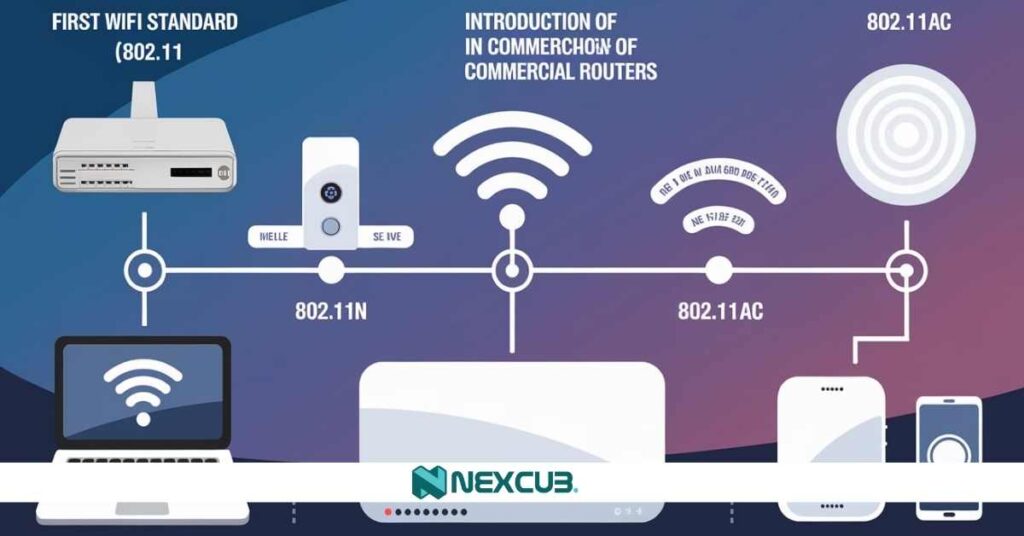Our Location
304 North Cardinal St.
Dorchester Center, MA 02124

WiFi has transformed how we connect to the world, powering everything from smartphones to smart homes. Q1 Koziol’s insights into WiFi evolution reveal groundbreaking advancements in wireless technology. By leveraging the IEEE Spectrum, engineers are pushing the boundaries of speed, reliability, and efficiency in connectivity. This progress impacts businesses, communities, and everyday users in the United States.
Discover how WiFi’s evolution, powered by Q1 Koziol and IEEE Spectrum innovations, is shaping the future of connectivity. Let’s dive into the story behind these transformative breakthroughs.
WiFi Q1Koziol represents the next step in wireless communication, designed to improve speed, stability, and energy efficiency. Developed with insights from the IEEE Spectrum, this advanced WiFi standard tackles challenges like crowded networks and slow connections. It uses smarter signal management to deliver faster downloads, smoother streaming, and better performance in busy environments like homes, offices, and public spaces.
Unlike older WiFi technologies, WiFi Q1Koziol focuses on integrating seamlessly with modern devices while consuming less power. This makes it ideal for the growing demand for Internet of Things (IoT) gadgets and smart home systems. As it gains traction, it’s expected to redefine how people and businesses in the United States stay connected.
The IEEE Spectrum plays a critical role in defining how wireless technologies like WiFi Q1Koziol operate. By managing and regulating frequency bands, the IEEE ensures that wireless devices can function without interference. This is essential for maintaining stable and efficient connectivity in a world with increasing device usage.

WiFi Q1Koziol builds on the strengths of earlier WiFi versions, like WiFi 5 and WiFi 6, while addressing their limitations.
WiFi started as a way to cut the cords and give people wireless access to the internet. In the 1990s, the development of the 802.11 standard by the IEEE laid the groundwork for WiFi as we know it today. Early WiFi was slow and limited, mostly used for basic tasks like sending emails or browsing text-heavy websites. Despite these humble beginnings, it sparked a revolution in connectivity, allowing people to move freely while staying online.
As time passed, demand for faster and more reliable connections grew. WiFi evolved to meet these needs, expanding into homes, offices, and public spaces. What was once a luxury quickly became a necessity in modern life.
Q1 Koziol has played a pivotal role in shaping modern WiFi technology. With a focus on tackling the challenges of increasing internet traffic and device usage, Q1 Koziol’s research brings innovative solutions to the table. By emphasizing efficiency and reliability, Koziol’s work ensures that WiFi can handle complex demands without sacrificing performance.
Koziol has been instrumental in improving how WiFi manages signal interference, especially in crowded environments. These contributions are particularly relevant in cities where multiple devices compete for the same bandwidth. This work helps WiFi networks stay fast and reliable, even in the busiest locations.
WiFi technology has come a long way since its early days. Modern advancements focus on faster speeds, better range, and lower energy consumption. Features like beamforming (directing signals toward devices) and MU-MIMO (allowing multiple devices to connect simultaneously) have greatly improved performance.

Key advancements include:
These improvements make it easier to stream videos, play online games, and connect smart devices without lag or interruptions.
The IEEE Spectrum is the backbone of WiFi and other wireless technologies. It regulates frequency bands, ensuring devices operate smoothly without interference. By managing spectrum usage, IEEE enables efficient communication between devices, paving the way for innovations like WiFi Q1 Koziol.
Without the IEEE Spectrum, wireless networks would struggle to coexist, leading to dropped signals and slow speeds. For WiFi Q1 Koziol, the IEEE’s role ensures that it can use specific frequencies to achieve faster speeds and more stable connections. This is critical as more devices connect to the internet every day.
WiFi’s journey began with dial-up modems, where connections were slow, and sharing data wirelessly was unheard of. As broadband emerged, WiFi became faster and more accessible. Today, with fiber-optic internet, WiFi delivers lightning-fast speeds that rival wired connections.
The rise of WiFi has also fueled the growth of smart homes and IoT devices. From streaming 4K videos to managing security cameras, modern WiFi powered by Q1 Koziol and the IEEE Spectrum ensures that every device works seamlessly. This evolution continues to shape how we live, work, and connect.

WiFi has become an essential part of daily life, connecting people, devices, and systems seamlessly. It powers communication, entertainment, education, and even work, making it a backbone for modern living. Here’s how WiFi influences everyday activities:
| Aspect | WiFi | Wired Internet |
| Connection Type | Wireless, using radio signals. | Physical connection via Ethernet cables. |
| Mobility | Highly portable; allows users to connect anywhere within the signal range. | Limited to the location of the cable connection. |
| Speed | Can vary depending on interference, distance, and technology (e.g., WiFi 6). | Generally faster and more stable with lower latency. |
| Setup | Easier to set up without needing cables; ideal for multiple devices. | Requires cables and hardware; setup can be complex in large spaces. |
| Reliability | Susceptible to interference and signal drops. | More reliable with consistent performance. |
| Cost | Lower initial cost; no need for extensive cabling. | May require investment in cables and switches for larger networks. |
| Device Support | Connects multiple devices simultaneously via a single router. | Typically connects one device per port unless additional hardware is used. |
| Security | Vulnerable to hacking if not secured properly (e.g., weak passwords). | More secure as it requires physical access to the connection. |
| Best Use Cases | Homes, mobile devices, and temporary setups. | Offices, gaming, and situations requiring maximum speed and reliability. |
WiFi technology faces several challenges as demand for faster and more reliable connections grows. One major issue is network congestion, especially in urban areas where multiple devices compete for bandwidth. This leads to slower speeds and higher latency.
Another challenge is signal interference, caused by physical barriers like walls and competing devices on the same frequency. This weakens connections, particularly in large spaces or older buildings.
Security concerns are also significant. Unsecured networks and weak encryption leave WiFi vulnerable to hacking and unauthorized access. Additionally, the energy consumption of WiFi devices is a growing issue, especially as IoT adoption increases. Addressing these challenges requires smarter protocols and innovative technology like WiFi Q1Koziol.
WiFi has evolved dramatically since its inception:
READ: Geekzilla Tio Geek: Become Part of the Premier Geek Community Now!
The IEEE Spectrum is vital for the wireless tech industry, regulating how devices communicate across frequency bands. This prevents interference and ensures efficient use of limited resources.
By allocating specific bands for WiFi, the IEEE enables faster and more reliable connections. For example, the introduction of the 6 GHz band in WiFi 6E has reduced network congestion significantly.
The IEEE also drives innovation by setting global standards, allowing devices to work seamlessly across regions. This fosters technological advancements like WiFi Q1Koziol, ensuring wireless technologies continue to evolve and meet growing demands.

Optimizing your WiFi network can significantly improve speed and reliability. Here are some simple tips:
The future of WiFi is all about faster speeds, greater efficiency, and wider coverage. Emerging technologies like WiFi Q1Koziol and WiFi 6E promise even higher data rates and reduced latency.
The integration of 6 GHz bands will provide less congestion and better performance in crowded areas. Additionally, advancements in beamforming and MIMO technology will enhance signal strength, especially in large or complex environments.
As the Internet of Things (IoT) grows, WiFi will evolve to handle billions of connected devices, enabling smarter homes, cities, and businesses. The next generation of WiFi will be faster, smarter, and more reliable than ever.
WiFi 6 offers faster speeds, higher capacity, and better performance in crowded networks compared to WiFi 5. It also improves efficiency by handling multiple devices simultaneously through features like OFDMA and MU-MIMO.
Q1 Koziol has introduced innovations focused on enhancing WiFi’s efficiency and reliability, especially in dense environments. Their work optimizes signal management and reduces interference, improving overall network performance.
WiFi 6E is an extension of WiFi 6, operating in the newly available 6 GHz band. This extra spectrum reduces congestion, providing faster speeds and more reliable connections, especially in busy areas.
The IEEE Spectrum manages frequency bands, ensuring devices operate without interference. It sets global standards for WiFi, enabling seamless communication and fostering technological advancements.
Future WiFi advancements focus on even faster speeds, greater capacity, and smarter network management. Technologies like WiFi Q1Koziol and the integration of 6 GHz bands will enable faster, more reliable connections.
WiFi technology has come a long way, revolutionizing how we connect and communicate. With innovations like WiFi Q1Koziol and WiFi 6E, the future looks promising, offering faster speeds, more reliability, and better efficiency.
As wireless networks continue to evolve, the IEEE Spectrum will play a crucial role in shaping the future of connectivity. Whether it’s for homes, businesses, or cities, the next generation of WiFi will empower smarter, more connected environments for everyone. Stay tuned for even more groundbreaking advancements!